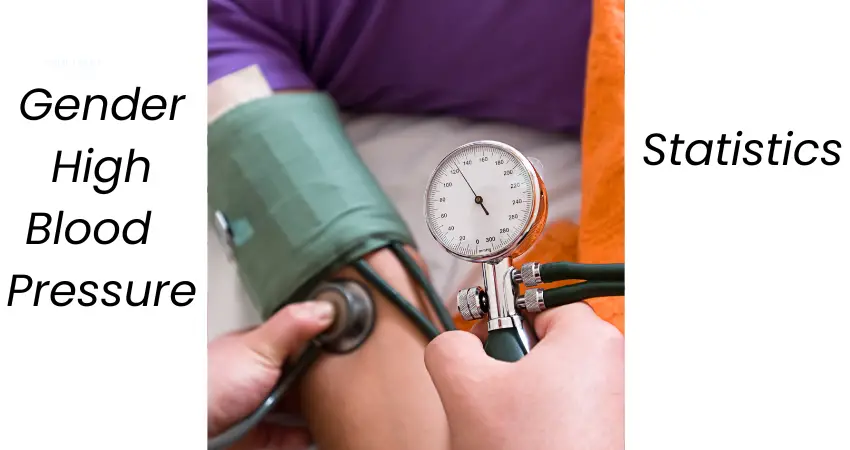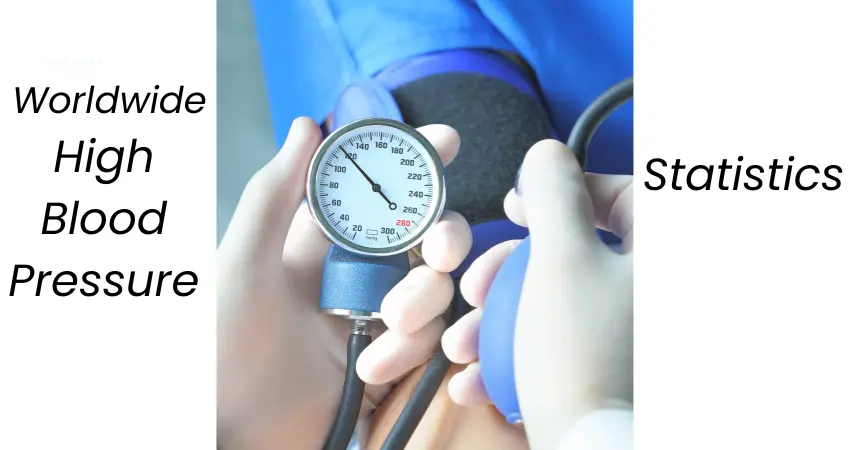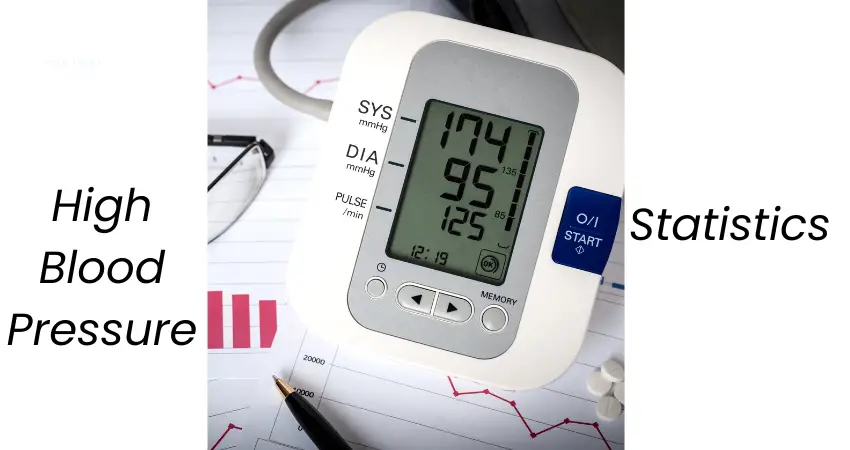High blood pressure isn’t just a term used by doctors; it’s a condition that affects millions of people worldwide.
The numbers we’ll explore here tell a tale of its prevalence, the risks it poses, and the need for awareness and action.
From global prevalence to age-related trends, gender differences, and geographical variations, we’ll uncover the facts that highlight the urgency of addressing high blood pressure.
Global Prevalence: High Blood Pressure’s Widespread Reach
When we talk about high blood pressure, we’re addressing a global health challenge that touches the lives of countless individuals.
Known in medical circles as hypertension, this condition isn’t confined to a specific region or population group; it’s a concern that spans across the continents.
High Blood Pressure Statistics
Imagine this: out of every three adults you pass on the street, one of them is likely grappling with high blood pressure.
Wrap your mind around that statistic – more than a third of the adult population worldwide faces this health issue.
To put it into perspective, that’s approximately 1.13 billion people, an astounding number that’s hard to ignore.
Think about the combined populations of several major countries – the ones that stretch across diverse landscapes, cultures, and lifestyles.
The significance of this prevalence goes beyond mere numbers. It highlights the need for increased awareness, education, and proactive steps to address high blood pressure.

High Blood Pressure Age Statistics
| Age Group | Risk of High Blood Pressure |
|---|---|
| Under 30 | Low |
| 30 – 49 | Moderate |
| 50 – 64 | Increased |
| 65 and older | High |
Age and High Blood Pressure: The Growing Risk
As we go through life, our age becomes a significant factor in the context of high blood pressure.
This relationship between age and health is quite noteworthy. Let’s take a closer look at how the risk of high blood pressure changes as we grow older.
- Under 30: At this stage of life, the risk of high blood pressure is generally low. Young adults are more likely to have normal blood pressure readings, given their active lifestyles and fewer health complications. However, it’s still important to maintain healthy habits and keep an eye on blood pressure as a preventive measure.
- 30 – 49: As we move into our 30s and 40s, the risk of high blood pressure starts to rise moderately. Lifestyle factors, such as diet, physical activity, and stress, begin to play a more significant role. Regular health check-ups and adopting a healthy lifestyle become essential to manage blood pressure effectively.
- 50 – 64: In this age range, the risk of high blood pressure increases further. The wear and tear on our blood vessels over the years, combined with lifestyle factors, can contribute to higher readings. It’s a crucial period to prioritize health habits and maintain close communication with healthcare professionals.
- 65 and older: Among adults aged 65 and older, the risk of high blood pressure is notably high. Nearly 7 out of 10 individuals in this age group have high blood pressure. This fact underscores the importance of regular check-ups and monitoring blood pressure as a part of routine healthcare. Managing blood pressure becomes even more critical in this phase to prevent related health complications.
As we progress through these age groups, the numbers remind us of the increasing importance of staying vigilant about our blood pressure.
Regular health assessments, lifestyle adjustments, and medical guidance are essential components of maintaining healthy blood pressure levels, especially as we grow older.

High Blood Pressure Gender Statistics
Gender Differences: How High Blood Pressure Impacts Men and Women
When it comes to high blood pressure, it’s an equal opportunity problem for both men and women.
This condition doesn’t pick sides based on gender – it affects everyone.
But the way it shows up can be different for men and women, thanks to our bodies and life stages.
Men and High Blood Pressure:
For the men, the risk of dealing with high blood pressure is something to watch out for throughout their lives.
They’re more likely to face this issue when they’re younger, even as early as their 30s and 40s. So, guys, don’t shrug off those regular check-ups.
Things like what you eat and how active you are can mess with your blood pressure, even when you’re young.
Women and High Blood Pressure:
Now, for the ladies, it’s a bit of a journey. Before they hit menopause (that’s usually around age 50), women tend to have lower blood pressure compared to men.
But once menopause hits, things can change. After menopause, the risk of high blood pressure goes up for women. Those hormonal shifts are part of the deal, and they can mess with blood pressure.
Why is this important to know? Well, it helps doctors and us understand how to deal with high blood pressure.
Men need to be mindful of their blood pressure early on, and women should keep an eye on it, especially after menopause.
This way, we can take steps to keep our blood pressure in check and avoid any health issues down the road.
Geographical Variations: High Blood Pressure Worldwide
High blood pressure isn’t confined to specific areas – it’s a global concern. It affects various countries and regions, and its impact is far-reaching. However, the rates of high blood pressure can differ based on a range of factors, including diet, lifestyle, and genetics.
Factors Influencing Geographical Variations:
Several factors contribute to these variations in high blood pressure rates:
- Diet: The types of foods people consume play a role in blood pressure. Regions with diets high in salt, saturated fats, and processed foods tend to have higher rates of high blood pressure. Conversely, areas with diets rich in fresh produce and whole grains generally experience lower rates.
- Lifestyle: Sedentary lifestyles, lack of physical activity, and high stress levels can contribute to higher blood pressure. Regions with more active and stress-reducing lifestyles often have lower rates of high blood pressure.
- Genetics: Genetic factors can also influence blood pressure rates. Some populations may be genetically predisposed to high blood pressure, which, when combined with environmental factors, contributes to varying rates.
- Healthcare Access: Availability and access to healthcare resources impact the diagnosis and management of high blood pressure. Regions with better healthcare infrastructure tend to have higher rates of diagnosis and better management.
The Call for Awareness and Action: Understanding these variations emphasizes the global nature of high blood pressure.
Regardless of location, it’s essential to prioritize regular health check-ups, adopt healthy lifestyles, and raise awareness about the risks.
By addressing the factors that contribute to these variations, we can work towards reducing the impact of high blood pressure and related health complications on a global.

States With the Highest High Blood Pressure Rates
Certainly, here’s a table depicting states with some of the highest high blood pressure rates in the United States:
| State | High Blood Pressure Prevalence |
|---|---|
| Mississippi | Approximately 40% |
| West Virginia | Approximately 38% |
| Alabama | Approximately 37% |
| Louisiana | Approximately 37% |
| Arkansas | Approximately 37% |
Please note that these figures are approximate estimates and may vary based on different data sources and time periods.
High blood pressure prevalence can change over time due to various factors, including healthcare initiatives and awareness campaigns.
Cities With the Highest Rates of High Blood Pressure
Sure, here’s a table listing 10 cities in the United States with some of the highest high blood pressure rates:
| City | High Blood Pressure Prevalence |
|---|---|
| Detroit, MI | Approximately 43% |
| Birmingham, AL | Approximately 41% |
| Memphis, TN | Approximately 41% |
| Cleveland, OH | Approximately 40% |
| New Orleans, LA | Approximately 40% |
| Jackson, MS | Approximately 40% |
| Toledo, OH | Approximately 40% |
| Baltimore, MD | Approximately 39% |
| St. Louis, MO | Approximately 39% |
| Little Rock, AR | Approximately 39% |
Demographics
Black Population:
- High blood pressure prevalence among Black adults is approximately 54%.
- Black adults are more likely to develop high blood pressure at a younger age compared to other racial groups.
White Population:
- High blood pressure prevalence among White adults is approximately 46%.
- While the prevalence is slightly lower than in the Black population, it’s still a significant concern.
Hispanic Population:
- High blood pressure prevalence among Hispanic adults is approximately 42%.
- The prevalence varies among different Hispanic subgroups, with Mexican Americans having higher rates compared to other Hispanic groups.
Conclusion
The statistics highlight the power of lifestyle choices in influencing blood pressure levels.
The way we eat, move, and manage stress plays a pivotal role in determining our cardiovascular health.
By making informed choices and embracing positive changes, we can significantly impact our blood pressure and overall well-being.
The disparities among different racial and ethnic groups remind us of the importance of tailored healthcare approaches.
Recognizing the unique factors that contribute to these variations enables us to develop strategies that address the specific needs of each population.
Sources
High Blood Pressure Statistics
Related Articles
Serrapeptase and blood pressure
Can sinusitis cause blood pressure spikes?
Facts about high blood pressure
Can castor oil lower blood pressure?
150 over 90 blood pressure
Best stethoscope for nurses
Widowmakers heart attack
.
My name is Phyllis Robinson MSN, RN. I have been a Registered Nurse for 27 years in the Cardiac Intensive Care Unit. I am passionate about cardiac care and heart disease. I also want this blog to be an educational tool that people can refer to for traditional and alternative treatment. I will blog on heart disorders such as high blood pressure, congestive heart failure, cardiomyopathy, and high cholesterol.
I received my Nursing degree from Baltimore Community College.
I went on to receive my Masters in Nursing from Walden University
I have worked for almost 30 years in Critical Care with a focus on heart health. I am an advocate of preventive healthcare.

